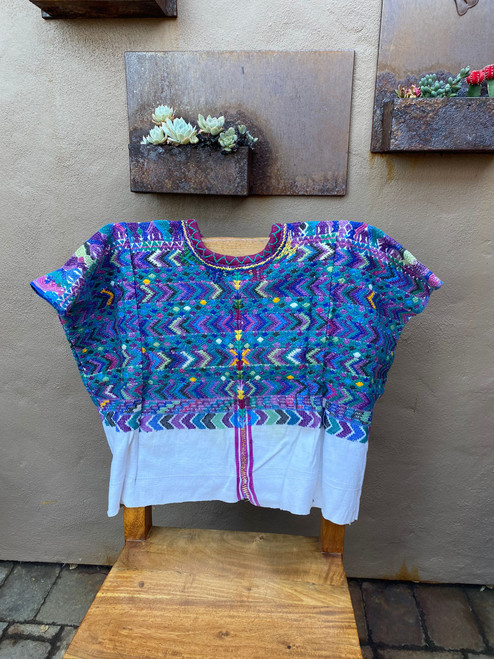Product Description
Hand-Woven San Pedro Saquetapquez Guatemalan Geometic Shape Hupil, Vintage Textile
-
Width:31"
-
Length: 36”
A woman may spend months weaving a single huipil when complex techniques or designs are required. Through the choices of design, material and finishing technique, information can be read about the weaver's birth-place, religious background, social position, weaving skill, and personality. Indigenous women can read the complex encoded messages in each other's huipiles at a glance..
Chajul is a Ixil speaking village, one of the three including Nebaj and Cotzal that comprise the Ixil Triangle in the department of Quiche. “Chajul is a traditional and charming town specializing in weaving and basket-making. . . The women of Chajul wear huipiles of white or red with scattered figures of animals woven into the cloth. Their pierced ears are decorated with strands of yarn onto which old coins are threaded.” (Guatemala Guide, Paul Glassman, Open Road, 1995, p.264) “The weaving in Chajul is especially firm and sturdy, and in order to achieve this, women usually stand at their backstrap looms rather than sit or kneel. . . . [B]irds, corn plants, arrows and diamonds predominate in their bold style of single faced brocade. Some everyday huipils are white, and a special three-web white huipil with mauve silk embroidery around the neck is worn by members of the cofradia. Both the sash and the hairwrap are prime examples of the skill and color sensitivity of Chajul weavers.”








